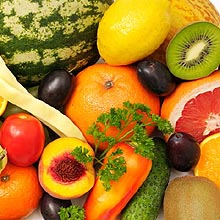| Home A B C D E F G H I J K L M N O P Q R S T U V W X Y Z |
|
Home |
Diverticulosis Treatment and Prevention Tips
If your diet has come up short in the roughage department over the years, you may notice the effects sometime after your 60th birthday. That is usually about the time pea-size pouches called diverticula start to form in the walls of the intestines, most often in the lower of the digestive tract. Sixty-five percent of us will have developed diverticula, a condition called diverticulosis by the time we turn 85. Like gray hair, diverticula come with age. Diverticulosis usually does not hurt. In fact, most people don't even know they have it until the telltale pouches show up on an x-ray or during an intestinal exam. 
For an unlucky 10 to 25 percent of those with diverticulosis, though, the condition worsens to diverticulitis. This means that the usually benign pouches become infected and inflamed, causing rectal bleeding, constipation, and severe abdominal pain. Between 15 and 30 percent of people with acute diverticulitis require surgery. Clearly, diverticulitis is serious business. However you can try out these tips and suggestions to treat and prevent it. Feast on fiber. Diverticula are usually a by-product of eating too much highly processed, low-fiber fare. Getting more fiber in your diet minimizes the likelihood that diverticula will form in the first place. Even if you already have diverticulosis, eating fiber-rich foods can help by relieving the constipation that is often a symptom of the condition. Fiber dilates the colon and reduces the pressure inside it. Among the best food sources of fiber are fruits, vegetables, and whole-grain breads and cereals. Add these to your diet slowly to minimize the gas pain that often accompanies an increase in fiber intake. Any discomfort that you do notice should only be temporary. You should aim for at least 25 grams of fiber per day. Do not get hung up on numbers, though. Just eat a whole-grain bread at lunch and add fresh fruits and vegetables to each meal. Do not be seedy. Stay away from foods that contain small seeds, including tomatoes and popcorn, and dishes prepared with whole-seed spices such as cumin and sesame. The seeds can lodge in the diverticula and cause inflammation. Banish red meat from your plate. It was found that the higher the intake of red meat, the greater the risk of diverticular disease. Neither chicken nor fish appears to produce a similar increase in risk. Drink plenty of water. Fluid makes the contents of the gut moister and lessens the pressure inside the colon, which may be responsible for the formation of diverticula. Try to drink at least eight 8-ounce glasses of water a day. Get moving. The more active you are, the less likely you are to develop diverticular disease. It was found that there is a link between exercise and diverticular disease. The best results, in terms of reduced risk, were associated with vigorous activities such as jogging and racquet sports. Try tranquility. When it comes to your digestive health, it is not only what you eat but how you eat that is important. Take meals without stress or distraction, never eat while standing up, and observe a moment of silence before eating - say a prayer or just close your eyes for a moment. Raymond Lee Geok Seng is one of the foremost experts in the health and fitness industry and is a writer specializing in body health, muscle development and dieting. He has spent countless of time and efforts conducting research and share his insightful and powerful secrets to benefit men and women all over the world. He is currently the author of the latest edition of "Neck Exercises and Workouts." Visit http://www.bodyfixes.com for more information. |
||
|
|
||
|
Glossary References Links Contact
|